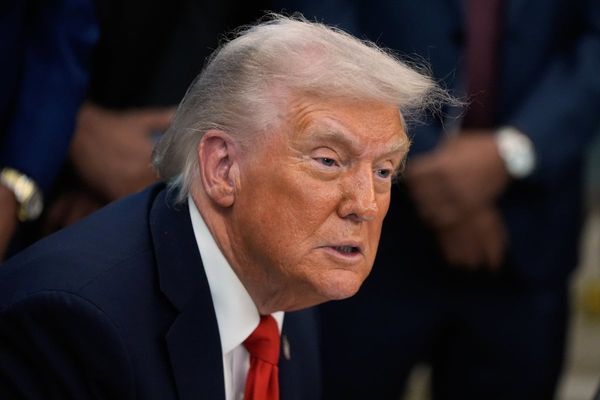Changes to tax perks for buyers of electric vehicles are coming. But the new EV tax credits come with complex rules that will significantly restrict which vehicles qualify, leaving consumers and auto industry insiders with a lot of questions.
Reforms to clean energy vehicle tax credits are part of the 2022 Inflation Reduction Act. The sweeping legislation earmarks $750 billion for health care, tax and climate initiatives. A key part of that bill includes new rules on which EVs qualify for tax credits. President Joe Biden signed the Inflation Reduction Act into law on Aug. 16.
The goal of EV subsidies is to lower the cost of electric vehicles and promote adoption of cleaner fuel sources. But significant restrictions on new EV tax credits, pushed by Sen. Joe Manchin, D-W. Va., are aimed at promoting a North America-focused supply chain for electric vehicles. That could significantly reduce the number of eligible EV models, especially for the next few years.
How Do The EV Tax Credits Work?
The Inflation Reduction Act makes a number of changes to EV tax credits. Below are key consumer purchase incentives, starting Jan. 1:
- Extends tax credit of up to $7,500 on qualified new EVs and hybrid vehicles through 2032
- New tax credit of up to $4,000 for used EVs put into service after Dec. 31, 2023
- Eliminates 200,000 vehicle sales cap
Doing away with the sales cap would make EV and plug-in hybrid models from Tesla, General Motors and Toyota potentially eligible for a tax break starting in 2023.
However, there are a number of additional stipulations that automakers must satisfy in order to qualify for these EV tax credits. Automakers must assemble the electric vehicles in North America. Other rules focus on where their battery materials and components are sourced.
The Best EV Stocks To Buy And Watch
Battery Material Requirements
To qualify for the full tax credit, new EV models must meet stringent battery supply rules. The new law requires that 40% of the metals used in an EV battery must come from North America or a country that the U.S. has a free-trade agreement with. That number would increase to 80% by 2027. Half of the tax credit is based on the mineral requirement.
However, most automakers currently get minerals for battery components outside the U.S. Right now Albemarle has the only operating lithium mine in the country.
ALB stock gapped up 18% the week after the bill's passage on Aug. 7 and is currently in a buy zone. The company reported 288% EPS growth in its Q2 earnings released on Aug. 3.
The other half of the EV tax credit is based on battery components. Some 50% must come from North America, rising to 100% by 2029. From the Associated Press:
"Automakers generally don't release where their components come from or how much they cost. But it's likely that some versions of Tesla's Model Y and Model 3, the Chevrolet Bolt EV and EUV, and the Ford Mustang Mach E would be eligible for at least part of the credit. All those vehicles are assembled in North America."
Half of the $7,500 EV credit is dependent on the battery metals and half on battery components. So some EVs could technically qualify for $3,750 in tax credits. But according to the Alliance for Automotive Innovation, which represents automakers including Ford, GM, and Toyota, none of the electric vehicle models produced today would qualify for the full EV tax credit once sourcing rules go into effect.
Battery material restrictions would not apply to used vehicles.
China Materials Barred
Additionally, vehicles with battery minerals and components sourced from China will — soon — not qualify for the EV tax credit. From The Verge:
"Under the new rules, EVs with battery components sourced from 'foreign entities of concern,' like China, where the vast majority of battery parts and minerals come from, will no longer qualify for the tax credit if they are put in service after Dec. 31, 2023. If the battery only contains minerals from these countries, then it will become ineligible for the credit starting Dec. 31, 2024."
The new restrictions on battery minerals and components have massive ramifications for the auto supply chain. Automakers like Ford and GM have invested hundreds of millions to source and develop lithium here in the U.S. But it could take years for those mining facilities to come online.
Tesla uses LFP batteries from China's CATL for some of its lower-priced Model 3 vehicles in the U.S. CATL has plans for a North America battery plant, but that will also take time.
Tesla Stock Vs. BYD Stock: Which EV Giant Is The Better Buy?
Electric Vehicle Price And Income Restrictions
Those that are hoping to use the EV tax credit on vehicle purchases next year will also need to meet certain price and income requirements.
New vehicles would need to have a suggested retail price below $55,000 for sedans. That price threshold would be $88,000 for SUVs, trucks and vans to qualify for the EV tax credit.
Buyers would also face certain income requirements to obtain a tax break. "Under the bill, buyers with household incomes above $150,000 for individuals and $300,000 for married couples wouldn't qualify," according to WSJ.
Used vehicle models need to be at least two years old and meet a price cap of $25,000 to qualify. Income caps would apply to those purchases as well.
When Do EV Tax Credit Changes Go Into Effect?
Starting Aug. 16, only vehicles assembled in North America are eligible for the $7,500 tax credit.
This requirement is confusing for new car buyers. Many EVs are manufactured in multiple locations. But consumers can find an ongoing list of which 2022 and 2023 vehicle models meet the North America final assembly requirement here. You can also enter your vehicle's VIN number here to see if your car qualifies for the rebate.
Tesla, GM and Toyota would currently meet those final assembly requirements, but they have already hit the 200,000 manufacturing cap, which still applies through Dec. 31. Cars from those companies would not be eligible for EV tax credits until those caps are lifted starting next year.
Changes to the EV tax credits related to battery material and components will be phased in over time. Tax credits for used vehicles will begin in 2023.
What About The Old EV Tax Credits?
The old EV tax credit system still applies through Dec. 31, but only for vehicles assembled in North America. So the Rivian R1T and Lucid Air still qualify, temporarily, despite their high prices.
Lucid, among others, is encouraging prospective buyers to agree to binding purchases before year-end.
Other electric vehicles that were previously eligible for EV credits, but assembled overseas, such as the Hyundai Ioniq 5, are now ineligible.
EV Stocks Rise On Climate Bill
Some EV-related automakers broadly saw a bounce the week after the Senate passed the climate bill on Aug. 7. But it's unclear if that just reflected gains for the broad market, which is now pulling back. Tesla stock has risen modestly, but has been hitting resistance at its 200-day line.
Further, the Wall Street Journal notes the bill could favor certain carmakers over others:
"Benefits from the bill will fall unevenly across car companies, depending on the prices of their vehicles, their customers' household incomes, and how quickly they are able to rewire supply chains and manufacturing footprints, analysts say.
The bill would give an immediate boost to Tesla and GM by potentially making their models eligible for the $7,500 for the first time in years. Each company years ago hit a 200,000-vehicle manufacturer cap that triggered a phaseout of the tax credit on their EVs."
In addition to Tesla and GM, established automakers like Ford are also expected to fare better than their startup competitors under new price restrictions. Ford stock has advanced from a July low of 10.61, but is well below its 200-day moving average. GM stock has climbed, partly due to the automaker reinstating a dividend.
Luxury brands Rivian and Lucid saw a slight bounce after the passage of the bill, but RIVN stock and LCID stock are now below their Aug. 7 levels. The Lucid Air sedan is far too expensive to get the EV tax credit in 2023, while many Rivian R1T and R1S trims will not qualify. California-based Fisker has retreated. That company would not qualify for tax credits because of the final assembly requirement. The Fisker Ocean is being assembled in Austria.
What Cars Qualify For New EV Tax Credit?
Proponents of the new EV tax credit say the changes made in the climate bill will make new and used electric vehicles more affordable. But many current EV models will not meet the current requirements under the new law. That's because of stringent requirements that say battery parts and minerals must be sourced from North America.
The Alliance for Automotive Innovation, estimated that of the 72 models of electric vehicles currently produced, roughly 70% don't qualify for tax credits.
"Unfortunately, the EV tax credit requirements will make most vehicles immediately ineligible for the incentive," Alliance for Automotive Innovation president and CEO John Bozzella said in an Aug. 7 press release. "That's a missed opportunity at a crucial time and a change that will surprise and disappoint customers in the market for a new vehicle."
While it is still unclear which EVs would qualify under the climate bill's new parts and materials sourcing requirements, below is a list of some of the popular or upcoming electric vehicle models produced in North America that may be eligible for EV tax credits in 2023, according to Consumer Reports:
- Tesla Model 3, Model Y and Cybertruck
- Ford F-150 Lightning and Mustang Mach-E
- Rivian RS1 and R1T
- Chevrolet Blazer EV, Bolt, Bolt EUV and Silverado EV
- Nissan Leaf
One uncertainty is whether crossover SUVs such as the Model Y and Mach-E will be classified as SUVs. If SUVs are based on weight, many crossovers likely will not. The Model Y and some Mach-E trims wouldn't qualify under the $55,000 price limit for sedans. Some Model 3 variants also wouldn't qualify.
Imported vehicles from buzzy EV startups would immediately be disqualified for new EV tax credits. This includes Fisker's all-electric Ocean SUV. That car begins deliveries in 2023.
Automakers React
Many automakers expressed concern over the new EV tax credit requirements. They say that with the current rules only a small number of vehicles would qualify. This would make EV adoption targets difficult to obtain without broader changes.
"It is disappointing that the Clean Vehicle Credit does not recognize the need to work with our allies as supply chains are being developed within the North American region," Autos Drive America president Jennifer Safavian said in an Aug. 7 release in reaction to the bill. That group represents the interest of international automakers with operations in the U.S.
EV startup Rivian also spoke out on the climate bill, telling Reuters on Aug. 3 that the new EV tax credit requirements "pull the rug out from consumers considering purchase of an American made electric vehicle."
Hyundai, which recently announced it was investing more $10 billion in EV manufacturing facilities in the U.S., said they were "disappointed that the current legislation severely limits EV access and options for Americans." The popular Ioniq 5 and Kia EV6 are both imported from South Korea.
Some domestic automakers had a more optimistic outlook on the legislation.
In an Aug. 1 statement, GM said they were "encouraged by the framework" of the EV-related provisions outlined in the Inflation Reduction Act. And Ford CEO Jim Farley told reporters on Aug. 10 that the new EV tax credits would be a "positive" for the auto industry.
If nothing else, General Motors and Tesla will face far-fewer rivals that qualify for EV credits in the near term. Ford is a partial winner, because it had been nearing the old 200,000-vehicle cap.







